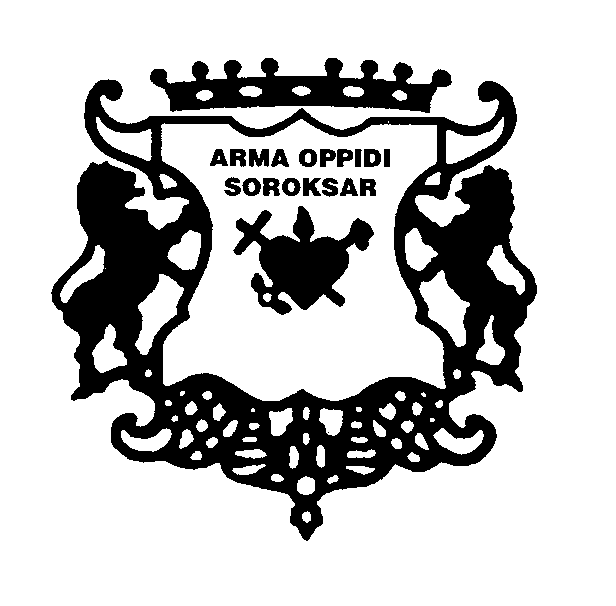SP425 HOMEWORK SP425HW11 DUE DATE WED 5 DEC 2007
SP425 HOMEWORK SP425HW11 DUE DATE WED 5 DEC 2007SP425 QUANTUM MECHANICS II HOMEWORK SET 02 DUE DATE
SP425 Homework
SP425-HW11 Due Date: Wed 5 Dec 2007
Elementary Particles
The quark content of objects can be found at http://en.wikipedia.org/wiki/List_of_mesons and http://en.wikipedia.org/wiki/List_of_baryons .
1. Similar to E&R Problem 18-3b, pg 712, kinda
Draw a quark flow diagram (a.k.a. Feyman diagram) for the pion exchange
reaction + p o + n.
2. Similar to E&R Problem 18-7a, pg 712, kinda
Draw a quark flow diagram (a.k.a. Feyman diagram) for the strong decay of the charmonium state
(3767), that is, D+ + D .
3. Similar to E&R Problem 18-15a, pg 713, kinda
Draw a quark flow diagram (a.k.a. Feyman diagram) for the weak decay of the negative pion:
+
![]() . Explicitly include the intermediate vector boson.
. Explicitly include the intermediate vector boson.
4. Go back and dig out your old modern physics notes or locate a suitable textbook. You can even find the derivation in Tipler. Look in the section pertaining to the Bohr model of the hydrogen atom.
a) The electrostatic potential energy in the hydrogen atom is V(r) = (probably should
include the 1/4o if you’re going to use the mks system); where
z = 1 for the electron and Z = 1 for the proton. Find an expression for the force between the electron and proton by doing Fr = .
b) Starting from a SP221 circular motion treatment, derive the formula for the
radius of the electron orbit using the Bohr model.
c) Using a calculator, spreadsheet, or computer algebra system, obtain a
numerical value of the radius for n = 1.
d) What is the orbital speed of the electron (v/c)?
5. Consider the bound state of a quark-antiquark. The form of the QCD potential is
V(r) = + K2 r
where K1 = 50 MeV•fm and K2 = 1000 MeV/fm.
a) Follow the Bohr model procedure executed in Problem 4a & 4b, but with the
QCD potential above and produce an expression for the orbit radius in charmonium.
b) Using a calculator, spreadsheet, or computer algebra system, obtain a
numerical value of the radius for n=1.
c) Isolated quarks have never been observed. One explanation is that as the
quarks are pulled apart, the potential energy in the QCD field eventually
exceeds that required to produce a qq pair. At what separation distance
does this occur for producing a uu pair?
Tags: homework sp425-hw11, homework, sp425, sp425hw11
- TURISMO O DIAADIA DE UM AGENTE DE VIAGENS
- 1 BASICS OF THE THETA SYSTEM 1 2 VERB
- ANNEX 3 NOTIFICACIÓ DE PARCEL·LES QUE FINS ARA HAN
- OBRAZAC IZJ 12021 IZJAVA O NEOSUĐIVANOSTI KOJOM SE IZJAVLJUJE
- XIII DISEASES OF THE MUSCULOSKELETAL SYSTEM AND CONNECTIVE TISSUE
- PREFECTURE DE HAUTESAVOIE INSTALLATIONS OUVRAGES TRAVAUX OU ACTIVITÉS DANS
- RJEŠENJE O ODOBRAVANJU OCU MAJCI DJETETA SA TEŽIM
- ACUERDO DE SERVICIOS ENTRE LOS SUSCRITOS MAYOR DE
- FISCALIA SUPERIOR DEL PRINCIPADO DE ASTURIAS LOS
- TABLE 1 EXAMPLES OF CLEANING PRODUCTS USED AND THEIR
- LA COMISIÓN DELEGADA DE PESCA DE ADRI COMARCA DE
- NZQA UNIT STANDARD 4432 VERSION 8 PAGE 3 OF
- LONDON GUILDHALL UNIVERSITY THE UNIVERSITY OF NORTH LONDON
- BISHOPS DOWN PRIMARY SCHOOL CLASS TEACHER JOB DESCRIPTION ‘
- OBRAZAC ZAHTJEVA ZA PRISTUP INFORMACIJAMA (IME I PREZIMENAZIV
- FICHA DE AFILIACIÓN DATOS SOBRE LA INSTITUCIÓN NOMBRE ACRÓNIMO
- E JERCICIOS DE PROGRAMACIÓN RESUELTOS CON C CAPÍTULO 2
- ADMINISTRACIÓN DE LA SS Nº C TELÉFONO MODELO
- PROJECT ADMINISTRATION STRATEGY TEMPLATE THIS PROJECT ADMINISTRATION STRATEGY TEMPLATE
- ZAŁĄCZNIK NR 4 DO REGULAMINU FUNKCJONOWANIA SIECI DZIEDZICTWA KULINARNEGO
- A PRELIMINARY GUIDE TO THE MACROMYCETES IN THE FINSE
- VOL 2 MODEL STAM100 DYNAMIC STRAIN AMPLIFIER
- (NAZWA I ADRES FIRMY) FORMULARZ CENOWY
- GROVER SMITH GROVER SMITH DURHAM — GROVER SMITH OF
- UNIT B CELLS AND SYSTEMS STS AND KNOWLEDGE
- LA RENTA DE SOLIDARIDAD ACTIVA EN FRANCIA ¿ES LA
- 1 WARSZAWA DN 10082009R 2 3 1 KOMUNIKAT NR
- GRAMMAR 1 1 ABJAD (ALPHABET) MASALAH UMUM YANG SERING
- INTAKE & EXHAUST FORMULA SAE CBR 600
- INSTRUCTIONS ON THE USE OF THE ACCOMPANYING SOFTWARE MODULE
 BUDAPEST FŐVÁROS XXIII KERÜLET SOROKSÁRI POLGÁRMESTERI HIVATAL RENDÉSZETI ÉS
BUDAPEST FŐVÁROS XXIII KERÜLET SOROKSÁRI POLGÁRMESTERI HIVATAL RENDÉSZETI ÉSSEZNAM TRENUTNO VELJAVNIH POGODB KLET RODICE TRUŠKA –
NONSMILE CONTRIBUTOR AUTHOR RKIBAYA DOCUMENT NUMBER DOC1003 EFFECTIVE (OR
 BIOHUBCZ MEMORANDUM O SPOLUPRÁCI ZEMĚDĚLSKÝ VÝZKUM SPOL S RO
BIOHUBCZ MEMORANDUM O SPOLUPRÁCI ZEMĚDĚLSKÝ VÝZKUM SPOL S RO AUTODÉCLARATION EXIGENCES SOCIALES INTERNATIONALES BIO SUISSE 2021 CETTE
AUTODÉCLARATION EXIGENCES SOCIALES INTERNATIONALES BIO SUISSE 2021 CETTE6 GUIA PARA ELABORAR LA PROPUESTA DE TESIS GENERALIDADES
HANSI FÜTING 29 NOVEMBER 1970 HANSGEORG „HANSI“ FÜTING WIRD
 Á 65 MEDICIÓN REA DE CONTENIDO MATEMÁTICAS DURACIÓN 5
Á 65 MEDICIÓN REA DE CONTENIDO MATEMÁTICAS DURACIÓN 5LAUENBURGISCHE GELEHRTENSCHULE – FACHSCHAFT ENGLISCH – FACHCURRICULUM SEKUNDARSTUFE
 DESIGNING VIDEO CAPTURE BOARDS FOR USE WITH THE MICROSOFT
DESIGNING VIDEO CAPTURE BOARDS FOR USE WITH THE MICROSOFT DECEMBER 2014 TEACHERS GUIDE FOR A MEASURE OF CONFUSION
DECEMBER 2014 TEACHERS GUIDE FOR A MEASURE OF CONFUSION ZAŁĄCZNIK NR 1 DO REGULAMINU REKRUTACJI I UCZESTNICTWA W
ZAŁĄCZNIK NR 1 DO REGULAMINU REKRUTACJI I UCZESTNICTWA WUN AYUNTAMIENTO CONTRATA A UN PEON DE JARDINERIA PARA
 DANKA DATABASE CONTACT FORM INSTRUCTIONS PLEASE COMPLETE ALL REQUIRED
DANKA DATABASE CONTACT FORM INSTRUCTIONS PLEASE COMPLETE ALL REQUIRED CURRICULUM VITAE INFORMAŢII PERSONALE NUME PRENUME FRUNZA ADRIAN
CURRICULUM VITAE INFORMAŢII PERSONALE NUME PRENUME FRUNZA ADRIANAPPOINTMENT OF THE CHAIRPERSON OF A CEN TECHNICAL COMMITTEE
 UNEPCBDWGABS12 CBD CONVENIO SOBRE LA DIVERSIDAD BIOLÓGICA DISTR
UNEPCBDWGABS12 CBD CONVENIO SOBRE LA DIVERSIDAD BIOLÓGICA DISTRОКТЯБРЬСКИЙ ОЛЕГ НИКОЛАЕВИЧ ЗАВ ЛАБОРАТОРИЕЙ ИНСТИТУТА ЭКОЛОГИИ И ГЕНЕТИКИ
 PROPUESTAS PARA LA ELABORACIÓN DE UN PLAN DE ACCIÓN
PROPUESTAS PARA LA ELABORACIÓN DE UN PLAN DE ACCIÓN OBČINA TOLMIN ULICA PADLIH BORCEV 2 TOLMIN TEL (05)381
OBČINA TOLMIN ULICA PADLIH BORCEV 2 TOLMIN TEL (05)381